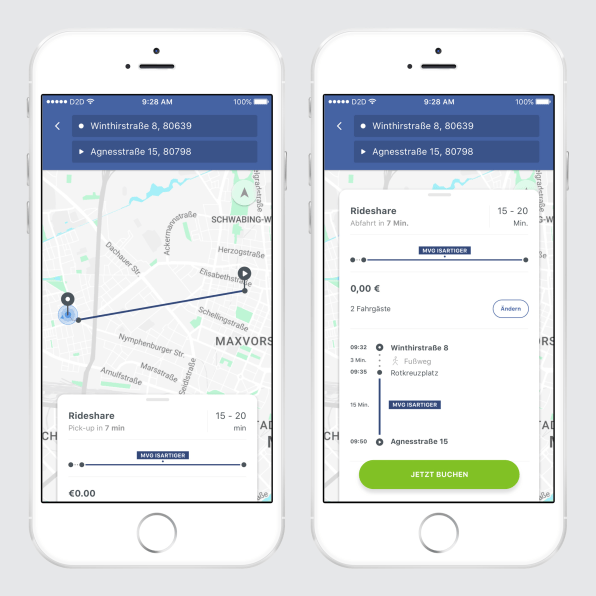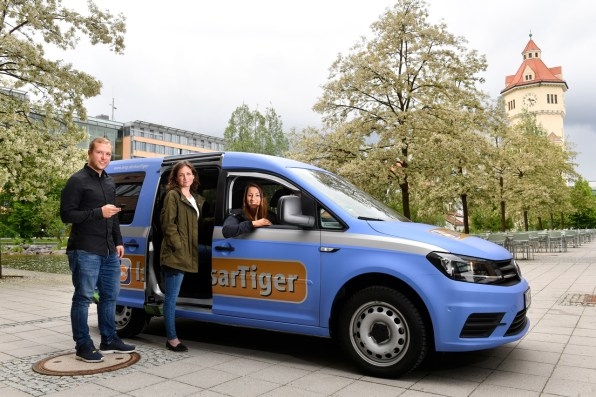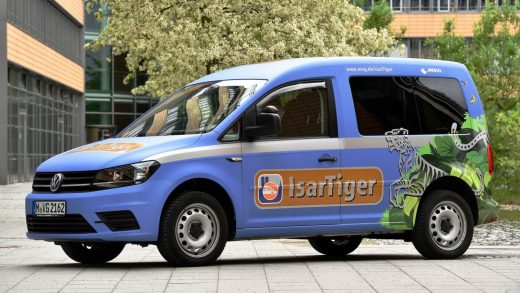Can ridesharing boost public transit, instead of taking away riders?
If you’ve ever ridden public transportation in Munich, you know two things: The system is enormous and slightly overwhelming, but also very good and astonishingly punctual.
Now, through a partnership with the Berlin-based on-demand mobility company door2door, the city of Munich wants to make its system even more accessible–by providing transit riders the option to hail a shared van that will take them, right on time, to their preferred tram or bus station, or perhaps all the way through to a final destination. The vans don’t run on a fixed schedule or route; rather, they adjust to meet passengers’ needs.
While ridepooling (sometimes called “microtransit”) is not new–startups like Chariot in New York and San Francisco, for instance, have launched in an attempt to ferry small groups of people to their individual destinations–Munich is trying to ensure its fleet of vans act as a supplement to existing public transit options, not a replacement.

“What we’re trying to do is use data analytics to close the gap between public transit, which is affordable and efficient for moving thousands of people but not so convenient for the individual, and something like Uber, which is very convenient, but expensive and not efficient on a city level,” says Tom Kirschbaum, CEO and founder of door2door, which developed the platform and algorithm for the Munich ridepooling program. Door2door has launched independent ridepooling services in both Berlin and Lisbon, prior to the collaboration with Munich.
Because the new service, called IsarTiger, functions as an extension of Munich’s public transit network, MVG, it’s able to offer carpool rides for the same cost as a trip on the U-Bahn, and to sync rideshare trip timing with bus and trolley departure times. For a passenger, all they have to do, Kirschbaum says, is pull up the MVG app and put in their final destination. “On the backend, the app scans for available vehicles, and if one can get to you within a reasonable time frame–say, 15 minutes–it will come pick you up,” he says. The IsarTiger vehicles, which can fit up to six people, can either take you directly to your destination, or collect everyone who hails a ride and bring them to a nearby transit station. The app algorithm, Kirschbaum says, calculates the total trip time per person based off all the requested destinations for a carpool, and determines whether it’d be faster to drop passengers off individually, or collectively at a public transit stop.
“We want to take the ideology out of it,” Kirschbaum says. “Passengers should be able to decide, based on their own scheduling and needs, whether to go with ridepooling or public transportation, or both.” The goal of the program overall, he adds, is to reduce the number of private vehicles on the city streets.

The new service, called MVG IsarTiger, is currently up and running in Munich as a small pilot–25 low-emission Volkswagen Caddies, which can fit up to six passengers, are circulating the city and offering shared rides to passengers. For now, the rides are free, as MVG collects data on the program. In the fall, it will start a full-scale testing period, through 2020, with rides costing about as much as a corresponding trip on public transit. (You’d have to pay again to enter public transit, just like switching between modes in other cities.)
The graduated roll-out process for IsarTiger is deliberate, Kirschbaum says. The city and door2door want to start small in order to understand how passengers use the service–and crucially, if there is a demand for it at all.
For all its hype in recent years, ridepooling initiatives in other cities and regions have struggled. Streetsblog reports that in Kansas City, for instance, the ridepooling company Bridj was a colossal failure–passengers made only 1,480 trips in the vans, and given that the local transit agency spent $1.5 million to administer the program, that levels out to around $1,000 a ride (Bridj is now defunct).
But perhaps Munich’s already existing, highly efficient mass transit system will be the difference. While in places like Kansas City and Santa Clara, home of another failed ridepooling initiative, the shared vans struggled to supplant private car usage, in Munich, the goal is really to supplement public transit. For people who are inclined to take their own car or hail a private taxi or Uber, Kirschbaum says, IsarTiger, he hopes, will present a cheaper and still-efficient alternative. For public transit riders, he says, the vans could serve as that sometimes-missing link between services, and one that’s synced with the overall system’s timetable.
And as Germany attempts to grapple with its love of cars–one of the last barriers to the country’s overarching sustainability efforts that include a drive to convert to renewable energy–these ridepool vans could let auto-lovers down easy, and encourage a gradual shift toward more sustainable mass transit options.
(6)



